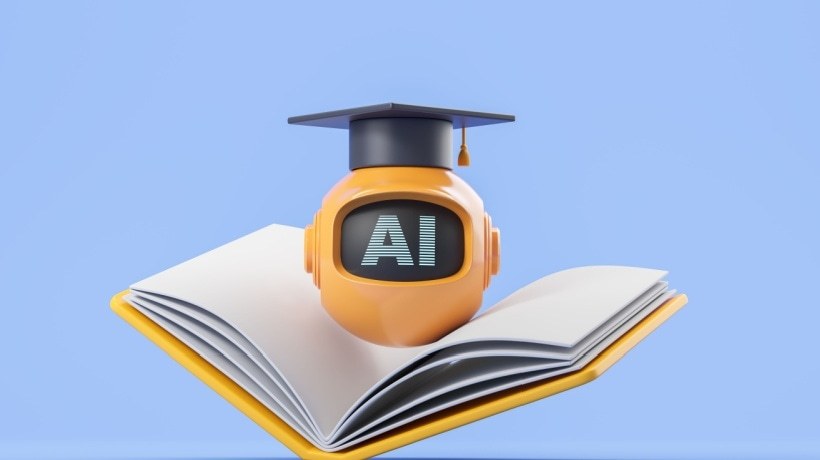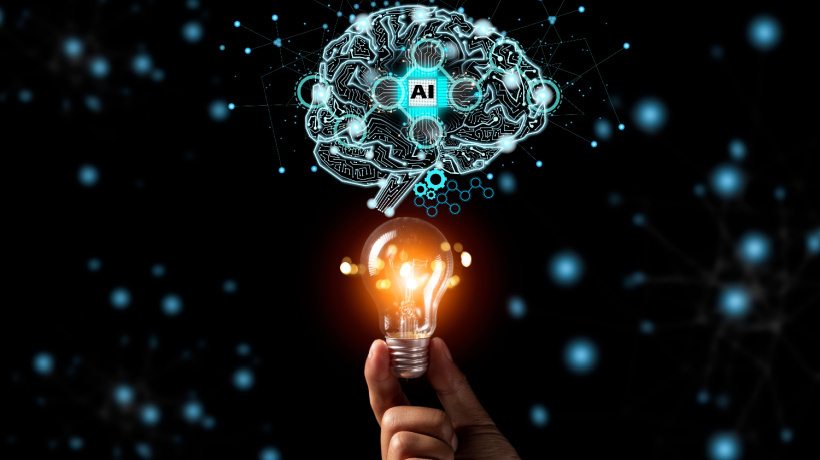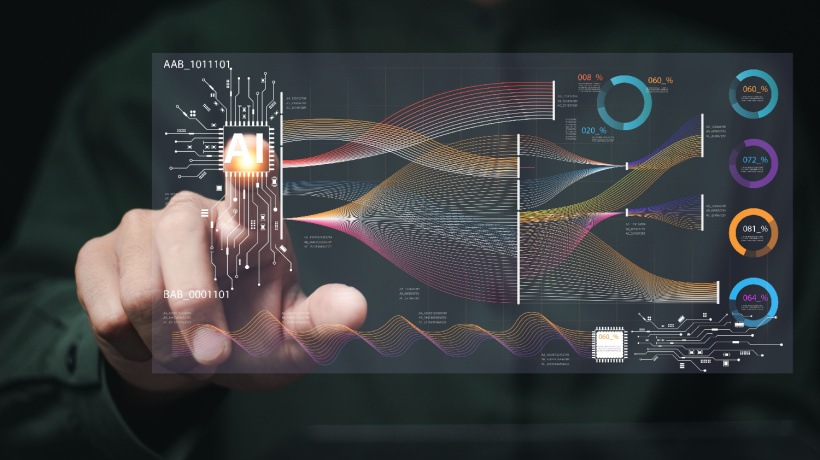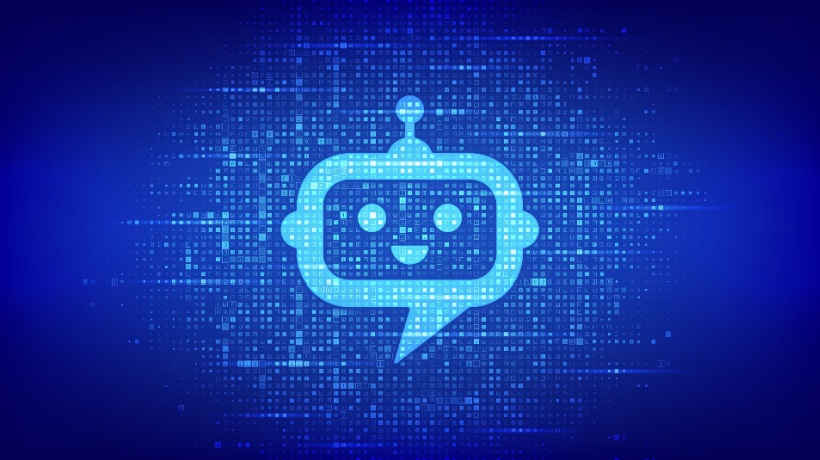The Influence Of AI In Higher Education
Not long ago, using Artificial Intelligence (AI) in universities was out of the question. But today, AI in higher education is quite common. From AI-driven research tools to smart learning platforms that adjust to each student's needs, there is a big change in how universities work. In the academic world, AI offers new opportunities for learning, teaching, and even managing institutions. Personalized learning paths, AI student support available 24/7, and smart systems that help professors identify students who might need help are just a few ways AI makes things better for faculty and students.
For universities, adopting AI has become necessary. And that's because the future of higher education requires adaptability and innovation. As student expectations evolve and institutions have competitors from all over the globe, AI offers a way to meet these needs more effectively. However, using AI isn't about replacing human educators or making classrooms impersonal. When used responsibly, it can enhance professors' work by handling repetitive tasks so they can focus on teaching, mentoring, and inspiring. So, how exactly can universities make the most of AI? In this article, we'll explore practical ways higher education institutions can leverage it and prepare for what comes next.
7 Strategies For Universities To Leverage AI
1. Personalized And Adaptive Education
Not every student learns the same, and most know it. So, it's only logical that they're not taught things the same way, either. Some prefer visual learning materials, others text content, and many like hands-on practice as well. Using adaptive learning systems, AI can help you accommodate every learning preference. With them, universities can tailor educational experiences to fit each student's pace, strengths, and gaps. Basically, these platforms learn the way students learn. Hence, if someone is struggling with a concept, the system can slow things down, give examples, or recommend extra practice. Similarly, if someone masters a subject, the platform can offer more advanced material. Arizona State University, for instance, has seen great results with adaptive courseware in its foundational classes. [1] The results were happier students with better grades, especially those who needed some extra help.
2. AI-Powered Academic Support
With tools like chatbots and virtual teaching assistants, students can get academic help whenever they need it, 24/7. These AI systems can handle FAQs, explain complex concepts, and even quiz students to help them understand concepts and increase knowledge retention. This is especially beneficial for large classes, where professors might not have time to answer hundreds of emails. However, an AI chatbot can respond immediately to questions about deadlines, projects, or exams. They can even walk students through problem-solving step by step, helping them build confidence without feeling embarrassed to ask questions. Plus, AI learns itself, too. So, the more students use it, the smarter it gets. One great example is Georgia Tech's virtual TA, Jill Watson, powered by IBM Watson. [2] Students in an online course had no idea they were interacting with an AI for weeks, proving how advanced the AI system is.
3. Automated Admin Processes
University admin work can be tough. Between managing enrollment, responding to student questions, organizing course schedules, and dealing with financial documents, university staff have a lot to work on. Thankfully, another way AI can help in higher education is by handling all these administrative processes. As we mentioned, many universities are now utilizing AI-powered chatbots to address routine student inquiries. But it doesn't stop there. AI is also being used to automate application reviews, schedule appointments with advisors, and even spot errors in registration forms. This reduces human error and saves valuable time. Of course, this doesn't mean replacing real people with robots. In fact, it allows faculty and admin staff to focus on more meaningful tasks. For example, universities can use AI during high-admissions seasons to sort and categorize thousands of applications based on their criteria. This results in happier students, satisfied employees, and a well-organized campus.
4. Enhanced Research And Data Analysis
Research can be overwhelming, whether you're a student or a professor. The good news is that AI can become a research partner as well. How does it work? AI systems with NLP can scan and summarize massive volumes of academic literature in seconds. That means instead of spending hours trying to find relevant studies, researchers can spend more time reading the results. AI is also helping researchers understand complicated data by using predictive modeling and spotting patterns. For instance, in climate science, AI can analyze numerous environmental data points to predict future events. In the social sciences, it can spot hidden trends in survey answers.
5. Smart Content Creation
Keeping up with creating new, engaging learning materials every semester can be a challenge for educators. With the right tools, though, higher education institutions can now use AI as an assistant to professors, helping them design and even generate course content that fits students' needs more effectively. AI tools can brainstorm quiz questions, summarize long research articles, or even translate academic material. AI also excels in organizing and recommending resources. These systems track what students are struggling with and automatically suggest articles, videos, or exercises accordingly.
6. Plagiarism Detection
AI has made it easier than ever for students in higher education to get help with assignments. But along with that comes a concern about academic integrity. With generative AI systems, universities are now wondering how to ensure students are doing their own work. Thankfully, AI has the solution. Many institutions now use AI-powered plagiarism detection tools like Turnitin, which has evolved to catch copy-paste and AI-generated content. These systems use advanced pattern recognition and linguistic analysis to spot suspicious submissions, helping educators identify potential problems. AI also supports universities in educating students about what plagiarism is and how to avoid it. Some tools even provide real-time feedback to students as they write, helping them rephrase or cite properly before submitting their work. Of course, relying too heavily on AI detectors can sometimes lead to false positives, so it's important for universities to establish clear AI-use policies to avoid false accusations.
7. Accessibility
One of AI's most inspiring ways to transform higher education is by making learning more accessible for everyone, especially students with disabilities or language barriers. There are plenty of AI-powered tools with built-in accessibility features like text-to-speech that can automatically transcribe lectures in real time. For students who are deaf or hard of hearing, that means they no longer struggle to keep up with spoken content. And then there's real-time translation. Many universities have international students who speak English as a second or third language. AI tools can translate lectures, subtitles, or even notes almost instantly. Let's not forget screen readers and AI-enhanced voice assistants that support visually impaired students. These tools can read digital textbooks aloud, describe on-screen images, and help students navigate courses easily. AI is even starting to interpret sign language and turn it into text or speech in real time. [3] While this is still new, the potential is huge for making classrooms more inclusive.
Conclusion
When it comes to AI in higher education, the key is using it responsibly, with humans always involved. AI should be a helpful assistant, not a replacement for educators. After all, the best AI systems empower both teachers and students, giving them new ways to connect, create, and succeed. So, while AI is powerful, it won't make a difference on its own; you must adopt it thoughtfully with a human-centered approach.
References:
[1] Improved Student Success and Retention with Adaptive Courseware
[2] Jill Watson: A Virtual Teaching Assistant for Online Education








